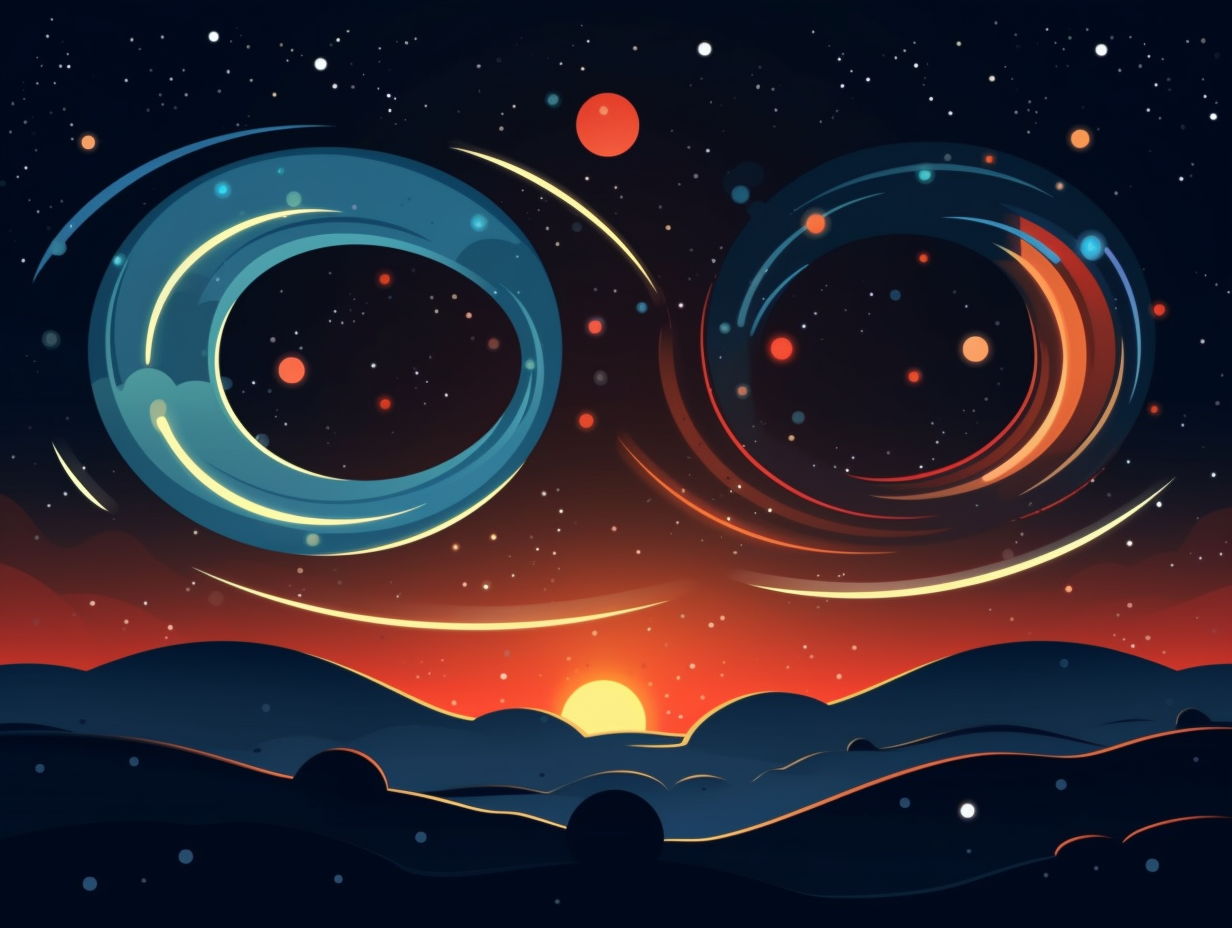Discover the Cosmic Wonders: Top 12 Fun Facts About Elliptical Galaxies You Need to Know

1. Galactic Makeover
Why did the spiral galaxy cross the elliptical galaxy? To give it a makeover, of course! In a cosmic encounter that could have been the plot of a celestial reality show, our very own Centaurus A went from drab to fab by gobbling up and assimilating a spiral galaxy's gases around 300 million years ago, leaving it with an unexpectedly stylish set of gas-filled spiral arms: Not only did this makeover give Centaurus A a more youthful appearance, but it also made it a hotspot for star formation, giving the elderly elliptical galaxy a new lease on life and leaving astronomers to wonder what other fabulous surprises may be lurking in the seemingly staid world of elliptical galaxies.
Source => insider.si.edu
2. Cosmic Grandparents
They may not be the spiraling life of the party, but elliptical galaxies are the cosmic grandparent we can't help but admire: Elliptical galaxies can span over a million light-years and contain trillions of stars, with supermassive black holes at their centers thought to halt star formation, making them ancient and fascinating celestial giants.
Source => space.com

Did you know Andromeda is the Miss Hannigan of galaxies, constantly gobbling up smaller ones? Discover its latest galactic meal that left the Dulais Structure behind!
=> Fun Facts about Galaxies
3. Not Middle-Aged, Just Red and Dead
Next time you're feeling past your prime, just remember that you're not a middle-aged elliptical galaxy on the brink of early retirement: Elliptical galaxies are often referred to as "red and dead" due to their low rate of star formation and dominance of old, red stars, with recent studies using the Hubble Space Telescope and ESO's Very Large Telescope uncovering their ancient halt in new star production.
Source => esahubble.org
4. Charming Elliptical Entities
While not exactly a socialite at a star-studded Hollywood gala, elliptical galaxies have a charm all their own: These ancient, yet alluring cosmic entities make up about one-third of observed galaxies, featuring elderly stars and hardly any gas or dust, which leaves them with a little less glow due to minimal star formation.
Source => hubblesite.org

5. Boxy or Disky Celestial Beauties
If you think elliptical galaxies are just cosmic mashed potatoes sitting out there in the universe, then you've got another think coming: Actually, these seemingly plain celestial beauties can be either boxy like chic packaging (E(b)) or disky like the UFOs from our favorite alien movies (E(d)), all while their photometric properties switch things up depending on their luminosity – truly marvelous and fascinating all at once!
Source => ned.ipac.caltech.edu
6. Slow and Steady Star Formation
Elliptical galaxies might seem like the grandparents of the cosmic family, sipping their metaphorical tea and reminiscing about their glory days when they used to make stars like it was no big deal: In actuality, some elliptical galaxies still take a slow and steady approach to star formation or have experienced intense bursts of activity due to major galactic mergers in the past.
Source => forbes.com
7. Galactic Plot Twist Births
Get ready for a galactic plot twist: not all elliptical galaxies are dramatic merge-a-holics! Some are actually born from the gravitational collapse of a gas cloud, leading to a flashy star-studded party that turns almost all gas into stars, while other dwarf elliptical underdogs are creations of leftover galaxy tidbits or the long tails drawing out from galactic tango partners.
Source => astronomy.swin.edu.au
8. Complex Speed Dating Histories
If elliptical galaxies swung by Earth and tried speed dating, their complex histories would leave everyone stumped – and possibly shunned: As the most massive stellar systems in the local universe, elliptical galaxies aren't just high achievers; they've also defied classical models with their formation being influenced by interactions, mergers, and nature of their environments rather than a single burst of star formation at high redshifts. Applause, please, for the local universe's mysterious overachievers!
Source => academic.oup.com
9. Wise Grandparent Galaxies
Elliptical galaxies might just be the wise grandparents of cosmic shapes, telling kids to slow down and stop forming stars all willy-nilly: The truth is, these mature galaxies are primarily composed of older, low-mass stars and rarely engage in star formation, resulting in a smooth, nearly featureless appearance and sparsely filled interstellar medium, packed with more globular clusters and fewer open star clusters and young stars.
Source => en.wikipedia.org

10. Cosmic Zombie Gas Clouds
Whoever said elliptical galaxies are dead must have been gas-lighting us all along: Recent Hubble Space Telescope observations reveal that these cosmic "zombies" are surrounded by clouds of cool gas, debunking the notion that they're devoid of gas and challenging our understanding of why star formation is quenched in these galaxies.
Source => astrobites.org
11. Galactic Dating Game Messiness
When galaxies play "The Dating Game": it's a series of messy breakups and mergers that lead to a whole new look! Meet the elliptical galaxy: formed through multiple mergers of spiral galaxies at z<2, which results in a tight scaling relation, and supported by hundreds of N-body simulations. These simulations show that the central merger remnants have similar surface brightness profiles to local ellipticals and follow a "fundamental plane" scaling relation, proving that even galaxies can find their perfect match in the cosmic dating pool.
Source => ui.adsabs.harvard.edu
12. Cosmic Smoothies in Collisions
When life gives you galactic collisions, make cosmic smoothies: Elliptical galaxies are formed when two spiral galaxies merge and lose their original structure, but this process doesn't create a space beverage! Instead, they contain older stars, less gas, and supermassive black holes that might inhibit star formation, making these galaxies a dim yet abundant addition to the celestial buffet.
Source => space.com
Related Fun Facts




















